Decorative fish that are bred in aquariums are represented by many species and species. Among the most popular varieties of representatives of the water world, guppies are especially popular, which attract aquarists with an interesting and vibrant appearance, a variety of shapes and sizes.
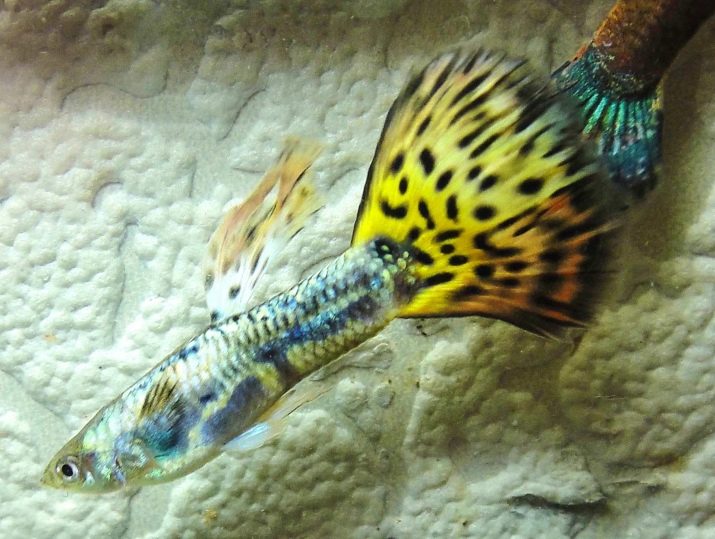
Main types
The breed of guppy fish is represented today by different individuals, however, most often in the home aquariums you can find the following representatives of the aquatic family.
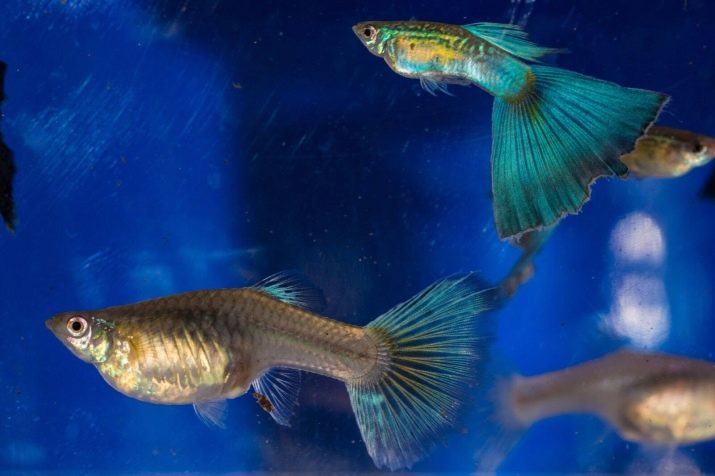
Plain guppy
This is a small, but no less attractive variety, in which sexual dimorphism is pronounced. In ordinary guppies, males are slightly behind in size from the female representatives, whose body length varies between 4-6 centimeters. The life expectancy of this species is 2-3 years, due to the features of the guppy content., such as small size and warm water, accelerating metabolic processes in the body of the river inhabitant.
The appearance of an ordinary guppy in the wild does not lend itself to a clear description, since such individuals very often interbreed, in light of which their color and shape may be different.
The species is undemanding to the conditions of detention, fish breed very actively. Individuals quickly adapt to various features of the aquatic environment, therefore, they can live in a tank, where the temperature will vary from + 19C to + 29C.
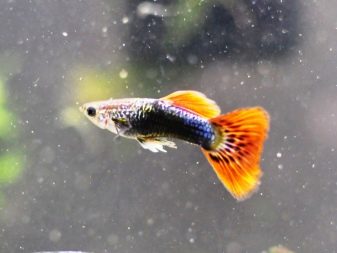
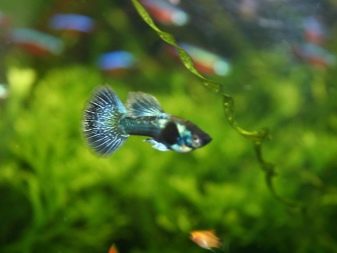
Guppy Endler
This species is represented by individuals whose size does not exceed 4 centimeters. Such decorative inhabitants live twice less than ordinary guppies.In this case, sexual dimorphism manifests itself not only in size, but in the appearance of guppies - females are not distinguished by the brightness of their color, but larger than the opposite sex. As for the males, they will turn out to be the main decoration of the whole flock and aquarium. This species has fish of different colors, even with bifurcated tails; some aquarists claim that each individual is unique in light of its color.
Guppy Endler is recommended for maintenance by inexperienced aquarists, since it is not very demanding on the conditions of the aquatic environment, most often such fish are kept in small home aquariums at a water temperature in the region of + 24C-28C. A rigid aquatic environment is suitable for fish, so its performance can vary from 15 to 25 dGH. Guppies develop well and breed in overgrown tanks with good lighting, flow in them should be minimal.
Most often, the Endler guppies can be found in the upper layers of the aquatic environment, in addition, these decorative miniature fish stand out for their mobility, as well as their tendency to jump out of the aquariums, so when they are kept, glass containers should be covered with lids. In light of their size, guppies get along only with small fish.
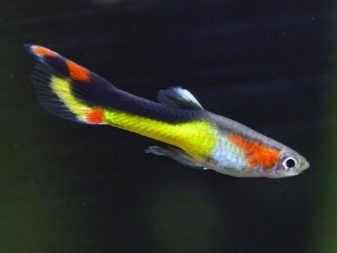
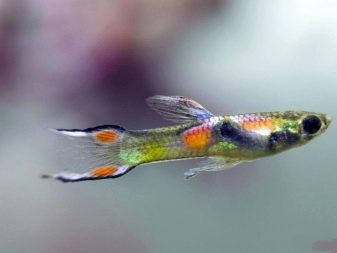
Swamp Guppy
The second name of this species is micropecilia pict. Fish is considered quite rare; it belongs to viviparous individuals. But in the light of its attractiveness, this particular species is in demand among aquarists around the world. This is due to the attractiveness of aquatic inhabitants. In the wild, marsh guppies can be found in the reservoirs of Brazil, Trinidad, South America.
In terms of size, it does not differ from the usual guppy, however, the color of the swamp species is distinguished by silver-green hues with intersperses of yellow, black, blue and other colors. In addition, the marsh guppy is also red and red-orange. The tail of representatives of the species, as a rule, is smaller in size, and the body is more streamlined, in comparison with the varieties described above.
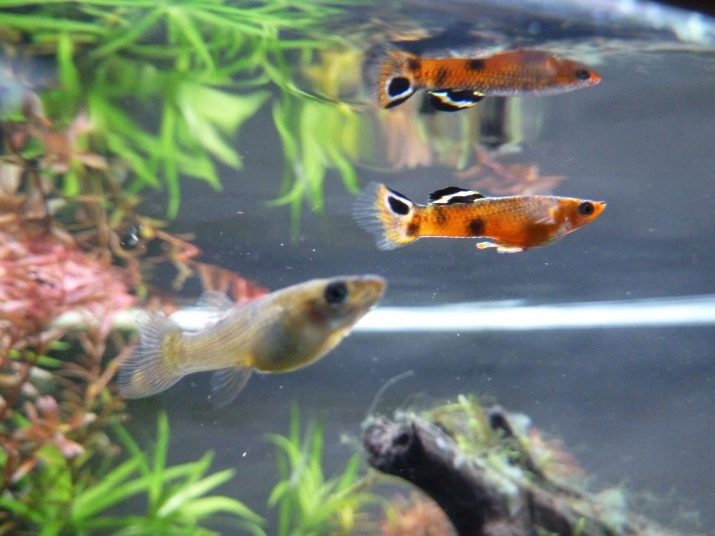
Females are less expressively painted, most often they are found in plain gray tones, but with a golden belly. In addition, the average size of males rarely exceeds 3 centimeters, while females grow two centimeters more. The average life expectancy of representatives of the marsh guppy is from 3 to 5 years.
For maintenance in aquariums, it is worth counting that at least 10 liters of water will be required for one individual. In addition, this species is distinguished by increased requirements for conditions of detention. So, for good health in closed tanks, the marsh guppies will need an alkaline, slightly salted environment, in which it is recommended that the aquarist add special salt.
Bright light is another nuance related to keeping fish, also in the tank there should be a maximum of dense vegetation.
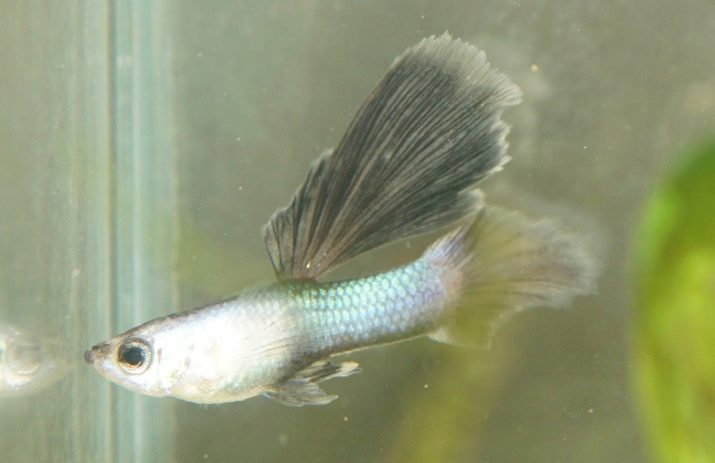
Varieties in the shape of fins and tail
When classifying these ornamental fish, the structural features of the tail and fins are taken into account. The main varieties of aquatic inhabitants are discussed below.
- Fan-tailed representatives. In fish of this species, a remarkable feature in the structure is the large and magnificent tail and dorsal fins. Due to this structure, it falls sideways or along the body of the aquatic inhabitant.

- Triangel. In fish of this species, the tail resembles a fan having the shape of an isosceles triangle. In this case, the dorsal fin stands out for its width, usually raised upward.
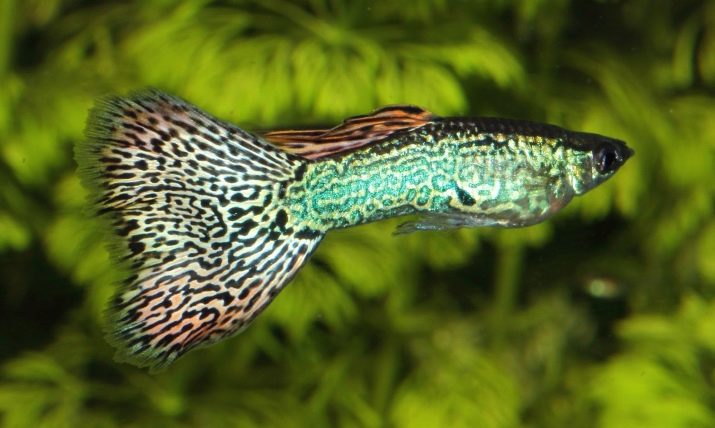
- Guppies are veil-tail and skirt. The specimens are remarkable for their tail fin closed in shape.
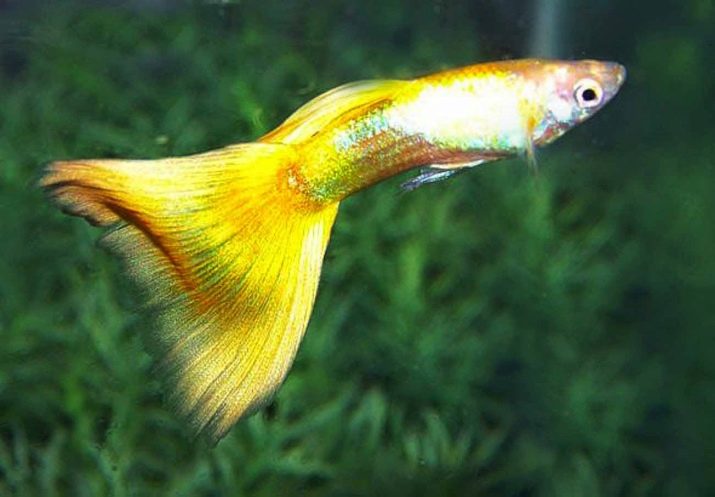
- Flag Tail. The dorsal fin in its shape contains sharp angles, while the tail resembles a flag.
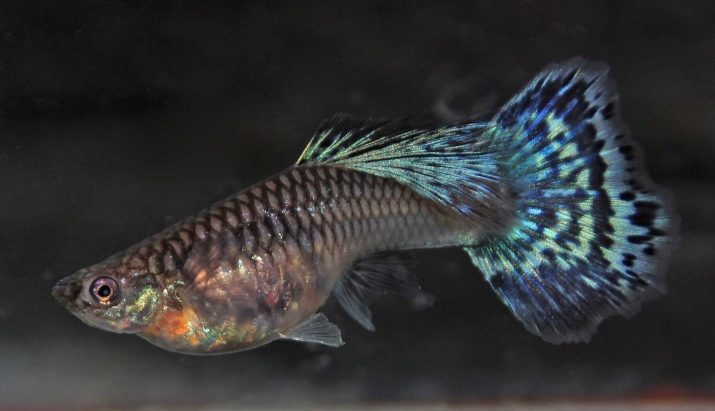
- Guppy with a tail in the form of a double sword. A feature of the caudal fin is an oval shape, which has two long rays, while on the back the fin is sharp.
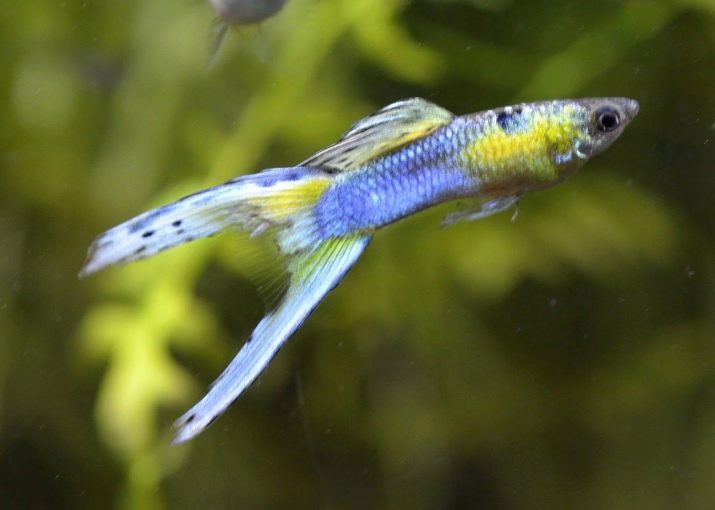
- Lower and upper sword. Two species of fish, in which the tail resembles long swords, and on the back the fin should contain a sharp end. Varieties differ from each other by the elongation of the lower and upper rays, whence the name of the individuals comes from.
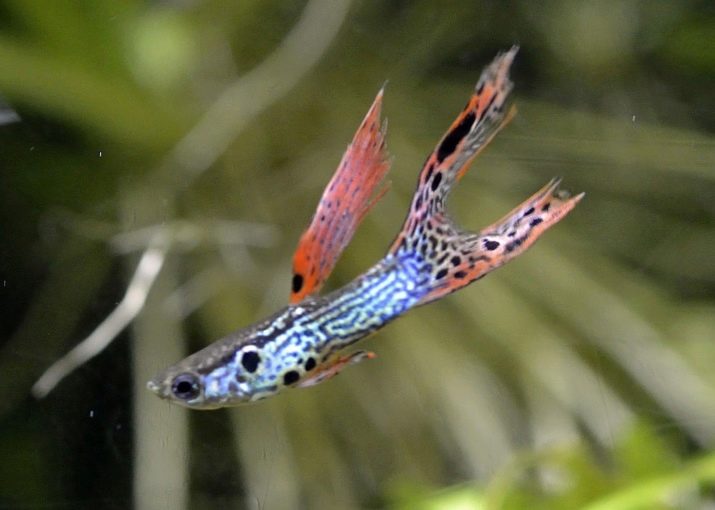
- Lyrebird. The fin in fish of this species is presented in the form of a lyre, and in fish the dorsal fin grows slightly elevated upwards.
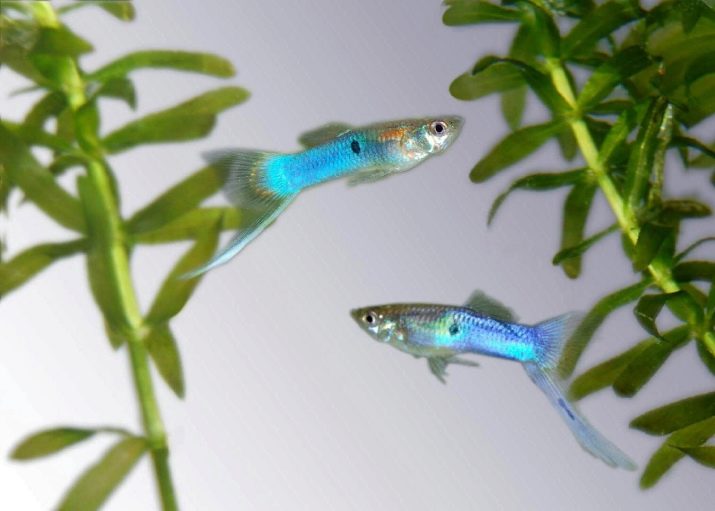
- Spear-tailed. Thoroughbred aquatic creatures that have a curved dorsal fin, as well as a tail resembling a spear tip.
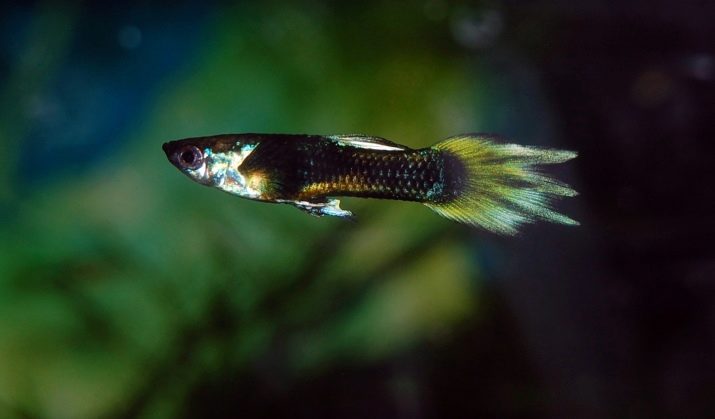
- Acupuncture fish. In such guppies, the dorsal fin has a rounded shape, as well as a beam located in its center.

- Round-tailed fish. The dorsal and caudal fins in this species develop in a semicircle.
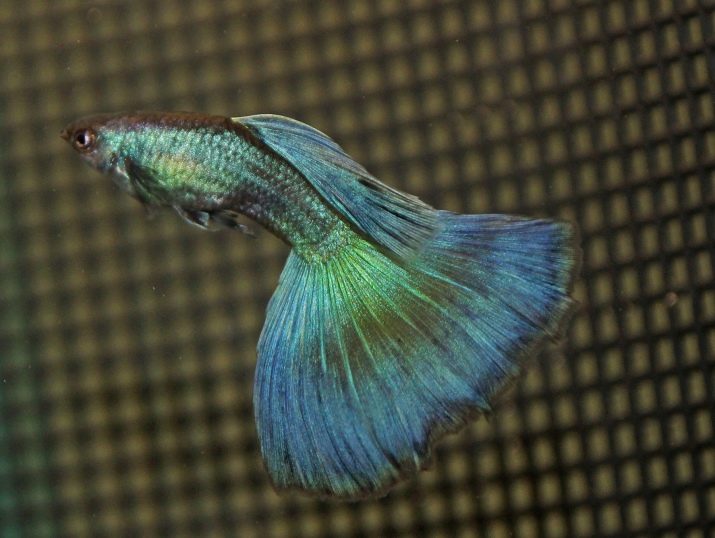
Variety of colors of rocks
Today for guppy classification in terms of color, three main nuances are taken into account:
- skin covering;
- Scale
- plaque.
Sometimes, in addition to the above characteristics, a pigment of cells is considered. Colors are distinguished as primary and secondary.
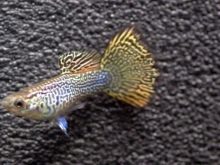
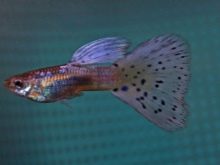
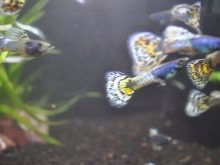
Popular Options
Among the most sought-after individuals of this breed The following types are worth noting.
- Moscow guppies. Such fish can be green, purple, and also blue in body color. In addition, metallic shine is allowed in shades. A rather attractive Moscow blue guppy is particularly in demand.
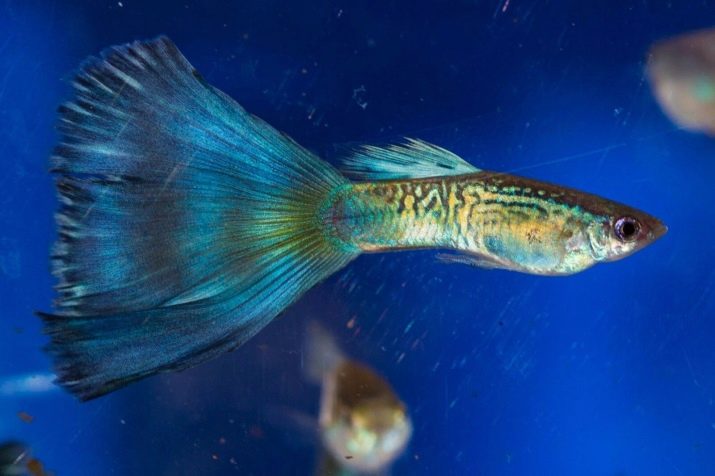
- Tuxedo. Such aquatic inhabitants usually wear a tuxedo. The back of the fish is painted in darker shades.
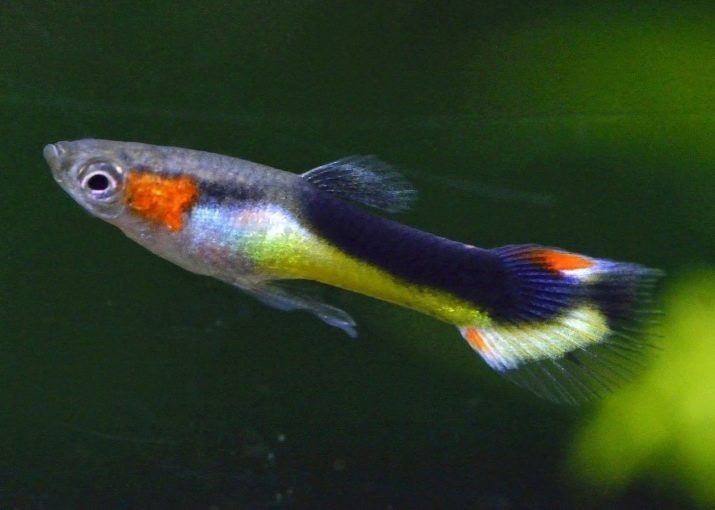
- Spaniards. The fish have a basic black color, while their tail is yellow, and the border on it is painted in red, with a minimal black pattern.

- Panda. The species is represented by aquatic inhabitants with a white front of the body, as well as a dark back, along with the caudal fin.
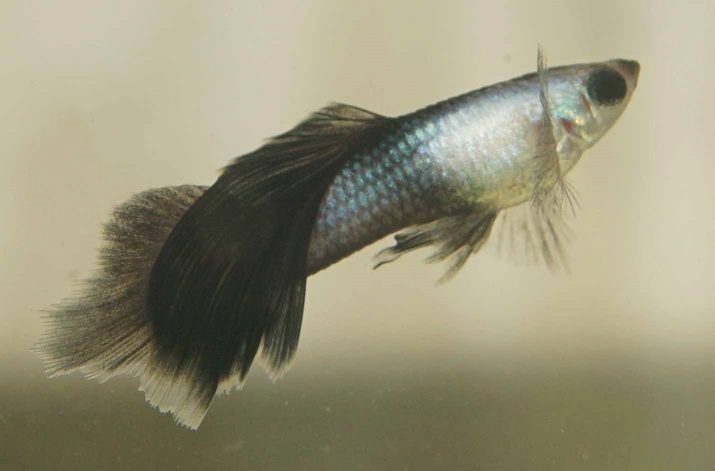
- Neon Elite fish of this breed, whose body color can be painted in a variety of pearl shades, which gives them incredible appeal when kept in aquariums.
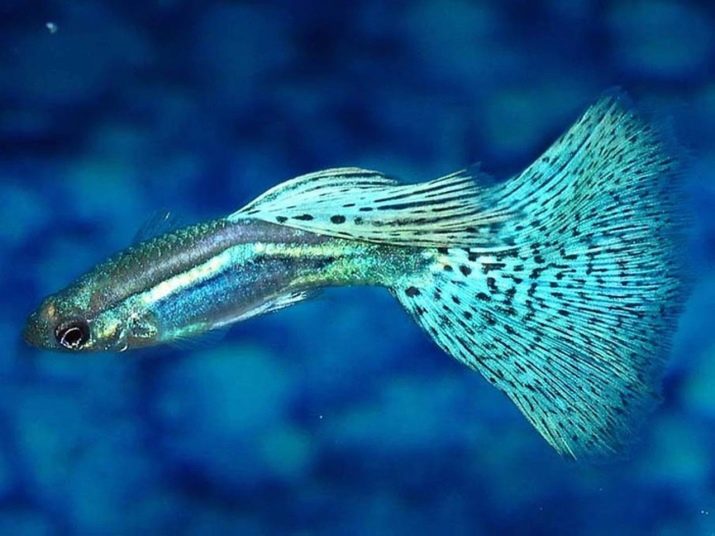
- Carpet. This species is notable for the unusual color of the fish tail - it is covered with multi-colored mosaics.
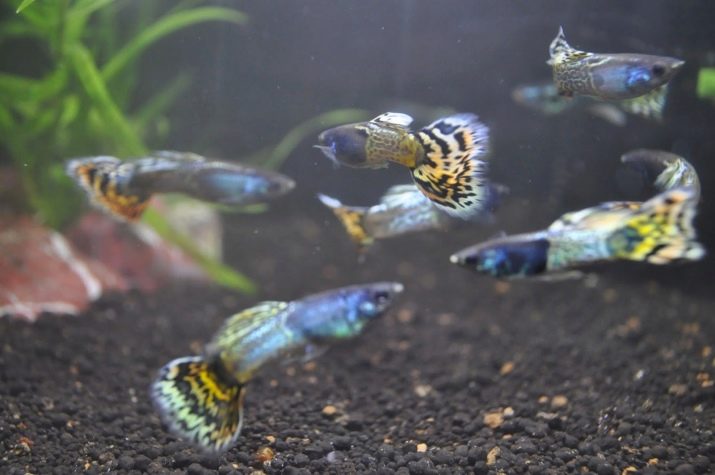
- Leopard. The name guppies was given in light of their similarities in color with the graceful predator from the cat family.
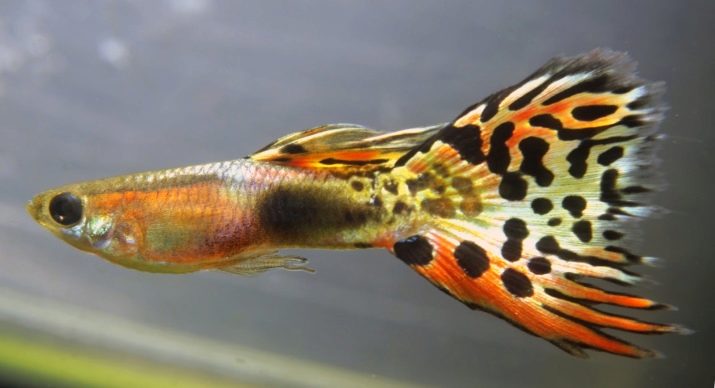
- Blond. These fish usually have a light color, for which they received a similar name.
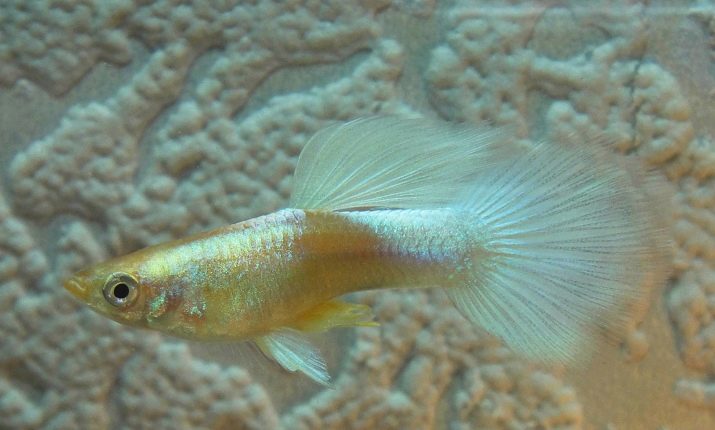
- Glass. An interesting type of guppy, which is represented by individuals that do not have color pigment on the skin and scales. The pupils of these fish are colored red.

- Savage. Individuals with a predominant gray color, as well as the presence of multi-colored spots located throughout the body of the fish.
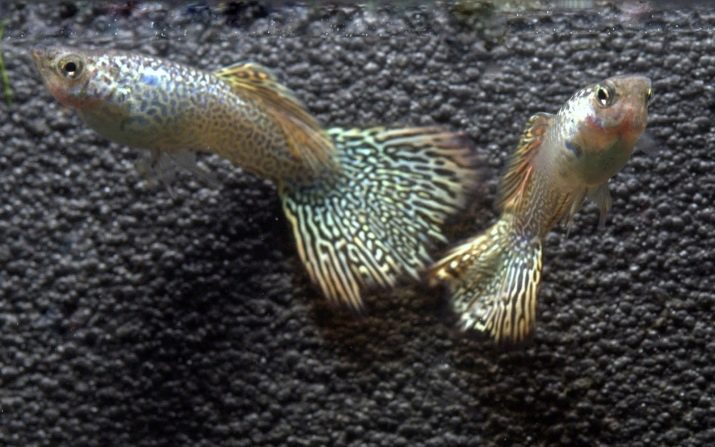
- Cloves. The variety got its name because of its tail, painted in orange, additionally decorated with a black pattern.
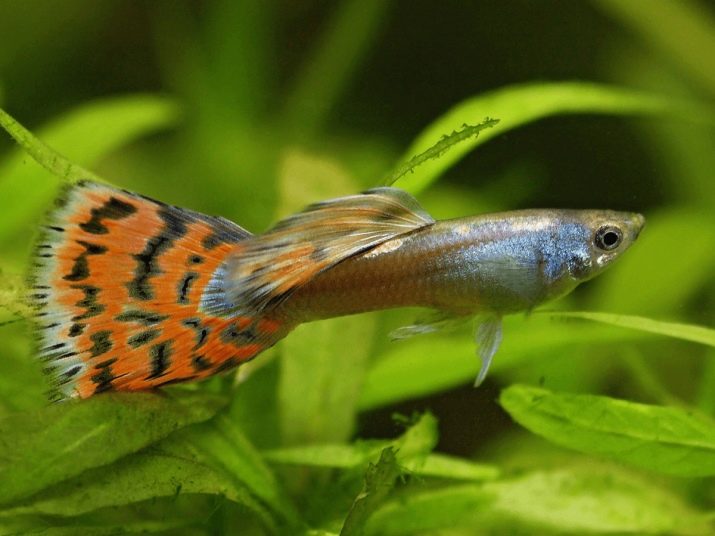
- Berlin. Representatives of this species are notable for their black body color, as well as red fins. "Berliners" are very often used for maintenance in decorative aquariums.
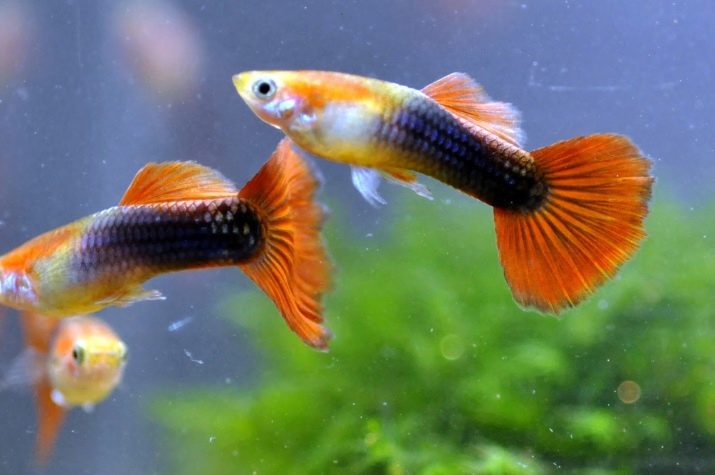
- Germanic. Most often, the guppies of this species are completely yellow.
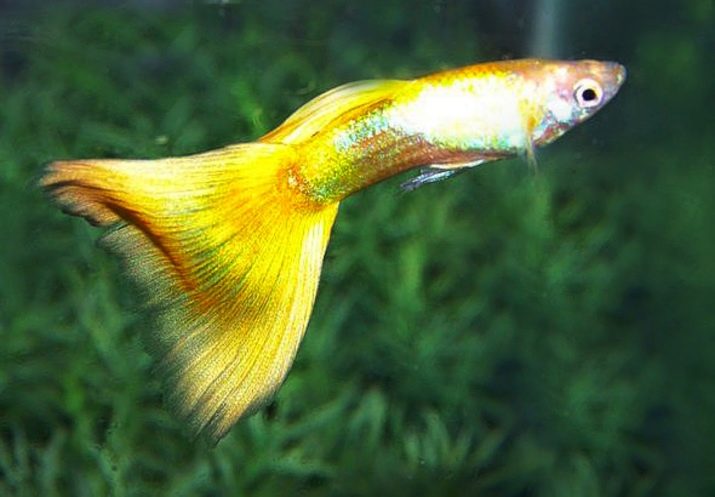
- Guppy mix. This species is the most diverse in relation to its aquatic representatives. A distinctive characteristic of such individuals is a pronounced sexual dimorphism regarding size - females are twice as large as males. The body of the fish is usually covered with neon or greenish blotches.
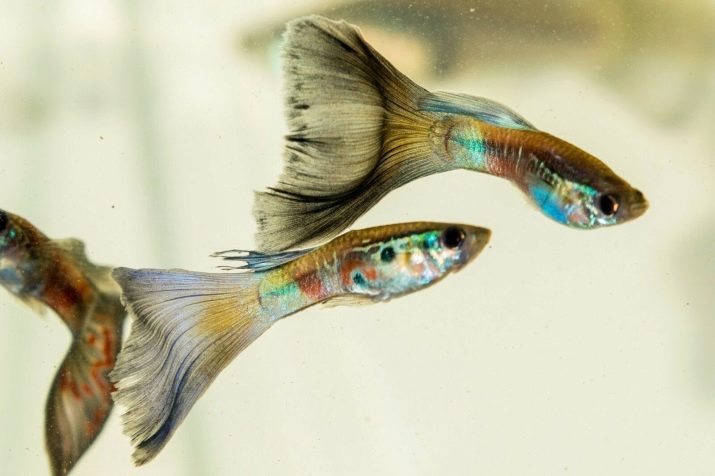
- Black Prince. The color of individuals is fully consistent with its name. Usually the most saturated body color is male.
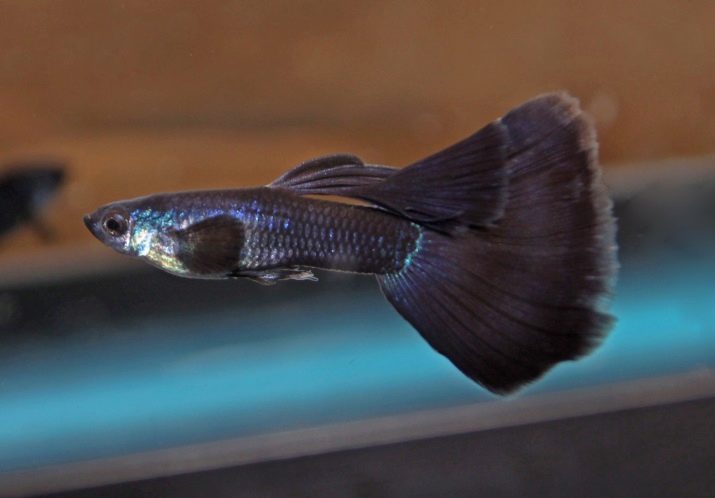
- Red guppies. Small, but very bright aquarium inhabitants, which are quite in demand among aquarists. The dominant color is notable for the presence of various ebbs, on the neck of the fish it is usually pearlescent.

- Spanish guppies. Incredibly beautiful fish, the body of which is painted in dark black and blue shades with bright tints. The tail is very pronounced in contrast, because it contains shades of red, orange, white, as well as black blotches.

In addition, such varieties are no less attractive and in demand:
- black monk;
- veil guppies;
- red blond.
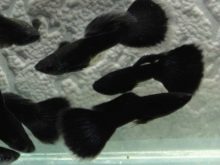
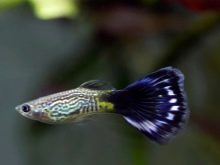
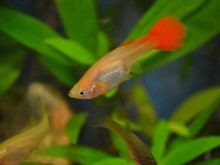
Rare colors
Among the numerous varieties, there are also rare and no less beautiful representatives of the breed.
- Guppy malachite. Thoroughbred fish have a very bright color, as well as long lateral fins and tail. They got their name due to the color of the scales, mainly in gray shades with a pronounced rhombic network.
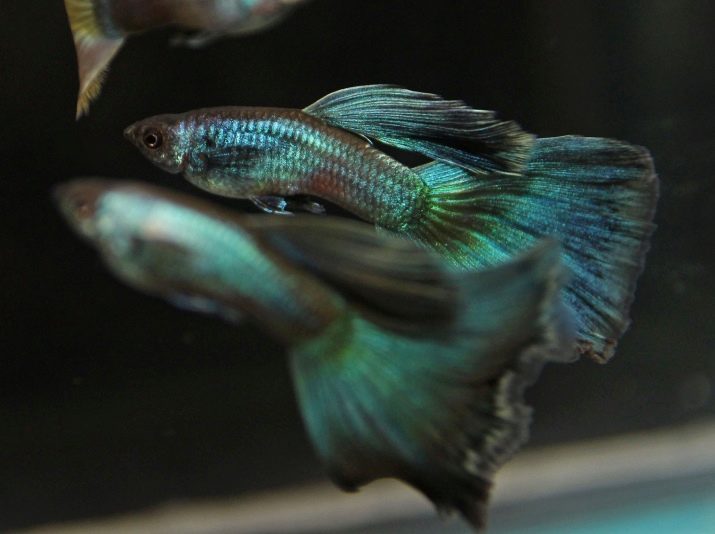
- Japanese guppies. Unusual aquatic inhabitants, which among all representatives of the breed are considered the smallest. Their color is dominated by black, blue and red shades. The appearance is distinguished by the fact that the transitions of one color to another on the body have clearly visible contours, this makes a decorative fish incredibly attractive.
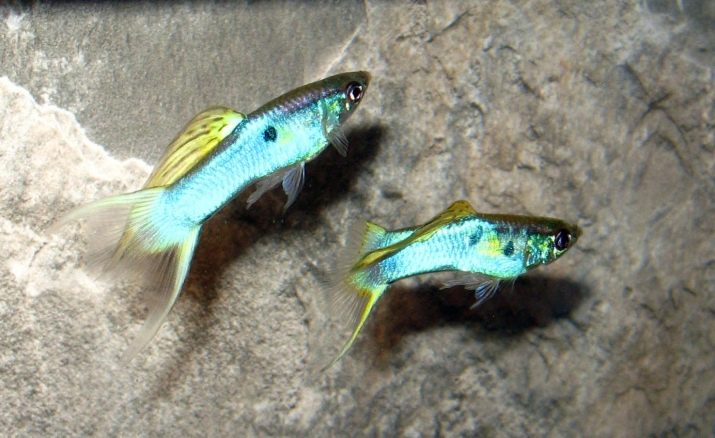
- Guppy galaxy. A small but very variegated representative of the breed. As a rule, on the scales of fish of this species you can find neon overflows, black blotches covering not only the body, but also the fins, as well as bright orange and yellow spots.
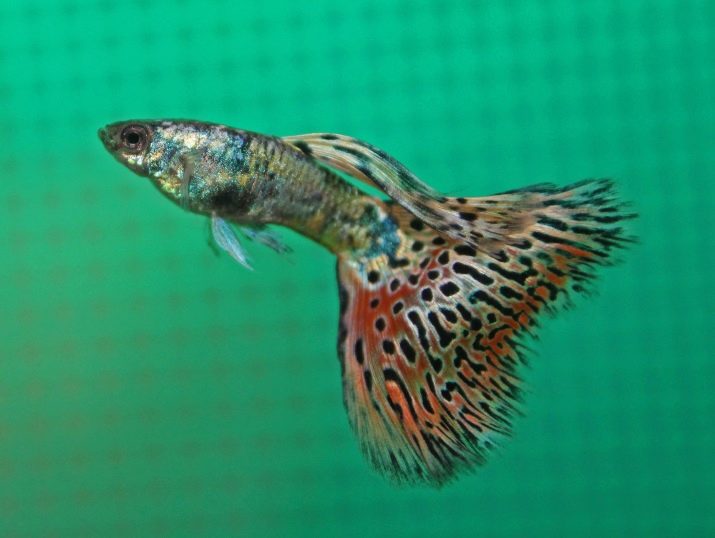
How to choose?
Such a fish is suitable for maintenance by experienced or novice aquarists, but the latter is still recommended not to start with exotic, but with simpler options, among which there are also no less beautiful decorative aquatic inhabitants. Unpretentious Berlin or carpet guppies are suitable for beginners, in addition, you can consider for the maintenance of leopard guppies.
Thoroughbred and elite varieties differ from ordinary species in not so strong immunity, therefore errors associated with insufficient experience can lead to sad consequences. In addition, such guppies will require more attention to themselves and the creation of special conditions for maintenance.
In general, the choice of a particular variety will depend on personal taste preferences, as well as financial capabilities, since some exclusive individuals can be quite expensive, in addition, for their cultivation you will need to purchase additional equipment in the aquarium.
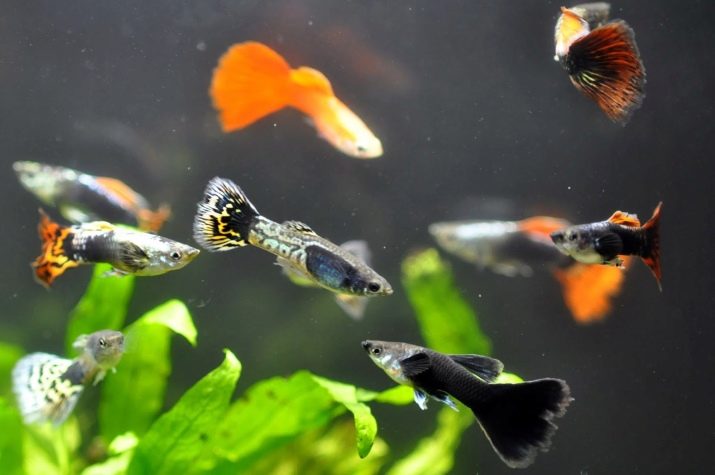
Next, watch a video about guppy varieties.










